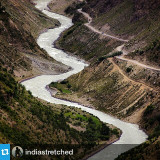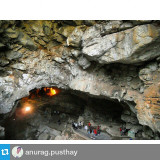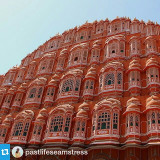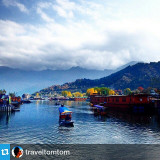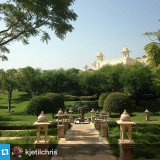Random image from our India photo collection

Bihar
Tourist Centers
Patna is a city rich in the relics of the ancient times. The Jalan Museum has a rare collection of ornaments. Sher Shah’s mosque in the heart of the city is a fine example of Afghan architecture. Begum Hajjam’s mosque is the oldest. Saif Khan’s Madarsa mosque, built in 1630, has a magnificent view of the riverfront. Excavations at Kumhrar discovered the remains of a Mauryan palace with sandstone pillars. Agam Kuan, which was part of Ashoka’s hell for prisoners, is situated here. The Khuda Baksh Oriental library has a collection of medieval manuscripts. The Patna has a collection of statues and a very old fossilized tree, 16 meters high. The Patna Cemetery is a historically important European monument situated in a Haveli (mansion) which is now a hospital. Some distance from the cemetery is the Padri ki Haveli, a Catholic church with an imposing façade.
Maner, a medieval monopoly of the Turks and the site of the shrines of Hazrat Makhdum Yahya Maneri and his son Shafruddin Ahmed Maneri is just 30 kilometers from Patna.
The remains of an ancient fort with massive cyclopean walls together with other sites in between lush green surroundings of Rajgriha recreate the glory of the past. This was believed to be the oldest architectural remains in India, until the discovery of Mohenjodaro and Harappa, The site is equally revered by the Jains, as their 24 Tirthankars are believed to have practiced austerities on the different hills of Rajgriha.
Nalanda, is the world’s most ancient place of learning. Through the excavations numerous monasteries, temples, stupas and statues of Buddha have been discovered. The Vikramshila University was an important institution of Tantric Buddhism.
Bodh Gaya houses the spot of the sacred Mahabodhi tree where the Buddha attained enlightenment. Adjoining the tree is the high-spired Mahabodhi temple considered to be the most sacred shrine for Buddhists.
Rajmahal is a medieval place believed to have been founded by Raja Man Singh, the Rajput general of Emperor Akbar. It was earlier a strategic place for the Bengal sultans before moving on to any military campaign.
The picturesque mausoleum of Sher Shah at Sasaram is bigger in size compared to the Taj Mahal, with a dome that surpasses it by 13 feet. No less picturesque is the tomb of Sher Shah’s son, Salim Shah, built in the center of a lake. A few hours’ drive from Sasaram takes one to the Rohtasgarh fort. It is a well defended fort with no equal for strength and solidity. The fort, 28 miles in circumference, is a perfect platform for eco-tourism projects. It is perched high on the Kaimur hills and there are abundant springs and numerous monuments that bring to life the history of its Mughal and Afghan governors and still later the Britishers who almost destroyed its remains.
The Chotanagpur plateau is spread over 34,000 square miles and covers the southern half of Bihar. It is one of the most fascinating places in India. It has many scenic attractions such as waterfalls, deciduous forests, hills (rising to 3,000 feet), plateaus (at elevations of 1,000 feet), valleys and wildlife. The Chotanagpur plateau also has a healthy climate that makes the region an ideal getaway.
The oldest geological formations of India are found in the Chotanagpur plateau. Bihar also stores a vast deposit of a variety of minerals that cater to national and international needs. Bihar accounts for half the total output of coal and mica, the whole of copper and about 45 per cent of the iron produced in India. It is also the only place in the country to have Uranium mines.
Other places in Chotanagpur include Ranchi, a striking hill station that inspired Tagore to compose a book of poems. Palamau is famous for its tropical forest and is rich in wildlife, and is the place where the world’s first tiger census was conducted in 1932. Today there are 45 tigers in the reserve. Next is the Hazaribagh Wildlife Sanctuary nestling at a low terrain (1,800 feet). Hazaribagh is also vying for a place in the international heritage list for its recent findings of rock paintings, caves, stone age tools and smelted iron slag that shows a much early beginning of the Iron Age than as theorized by Chalcolithic age. At another village in Hazaribagh, archaeologists have unearthed pottery remains that are identical to those found at Harappa.
Go back
Maner, a medieval monopoly of the Turks and the site of the shrines of Hazrat Makhdum Yahya Maneri and his son Shafruddin Ahmed Maneri is just 30 kilometers from Patna.
The remains of an ancient fort with massive cyclopean walls together with other sites in between lush green surroundings of Rajgriha recreate the glory of the past. This was believed to be the oldest architectural remains in India, until the discovery of Mohenjodaro and Harappa, The site is equally revered by the Jains, as their 24 Tirthankars are believed to have practiced austerities on the different hills of Rajgriha.
Nalanda, is the world’s most ancient place of learning. Through the excavations numerous monasteries, temples, stupas and statues of Buddha have been discovered. The Vikramshila University was an important institution of Tantric Buddhism.
Bodh Gaya houses the spot of the sacred Mahabodhi tree where the Buddha attained enlightenment. Adjoining the tree is the high-spired Mahabodhi temple considered to be the most sacred shrine for Buddhists.
Rajmahal is a medieval place believed to have been founded by Raja Man Singh, the Rajput general of Emperor Akbar. It was earlier a strategic place for the Bengal sultans before moving on to any military campaign.
The picturesque mausoleum of Sher Shah at Sasaram is bigger in size compared to the Taj Mahal, with a dome that surpasses it by 13 feet. No less picturesque is the tomb of Sher Shah’s son, Salim Shah, built in the center of a lake. A few hours’ drive from Sasaram takes one to the Rohtasgarh fort. It is a well defended fort with no equal for strength and solidity. The fort, 28 miles in circumference, is a perfect platform for eco-tourism projects. It is perched high on the Kaimur hills and there are abundant springs and numerous monuments that bring to life the history of its Mughal and Afghan governors and still later the Britishers who almost destroyed its remains.
The Chotanagpur plateau is spread over 34,000 square miles and covers the southern half of Bihar. It is one of the most fascinating places in India. It has many scenic attractions such as waterfalls, deciduous forests, hills (rising to 3,000 feet), plateaus (at elevations of 1,000 feet), valleys and wildlife. The Chotanagpur plateau also has a healthy climate that makes the region an ideal getaway.
The oldest geological formations of India are found in the Chotanagpur plateau. Bihar also stores a vast deposit of a variety of minerals that cater to national and international needs. Bihar accounts for half the total output of coal and mica, the whole of copper and about 45 per cent of the iron produced in India. It is also the only place in the country to have Uranium mines.
Other places in Chotanagpur include Ranchi, a striking hill station that inspired Tagore to compose a book of poems. Palamau is famous for its tropical forest and is rich in wildlife, and is the place where the world’s first tiger census was conducted in 1932. Today there are 45 tigers in the reserve. Next is the Hazaribagh Wildlife Sanctuary nestling at a low terrain (1,800 feet). Hazaribagh is also vying for a place in the international heritage list for its recent findings of rock paintings, caves, stone age tools and smelted iron slag that shows a much early beginning of the Iron Age than as theorized by Chalcolithic age. At another village in Hazaribagh, archaeologists have unearthed pottery remains that are identical to those found at Harappa.
Go back


